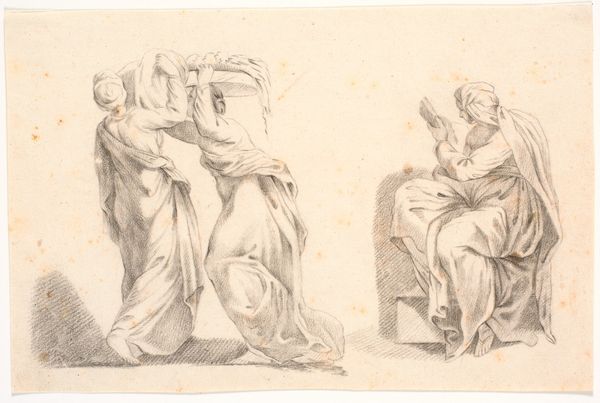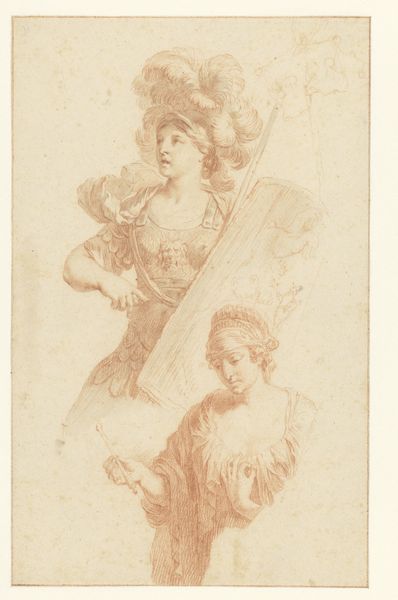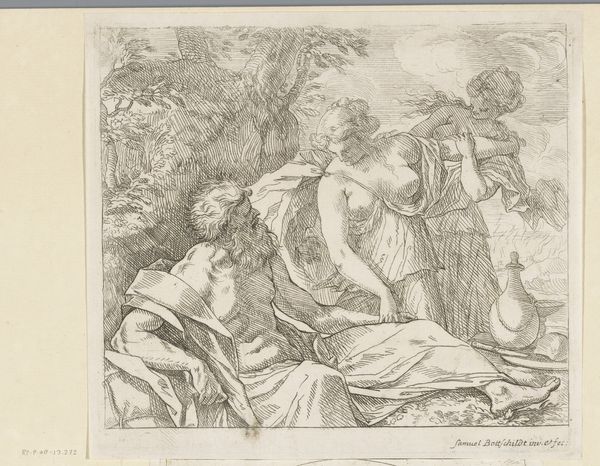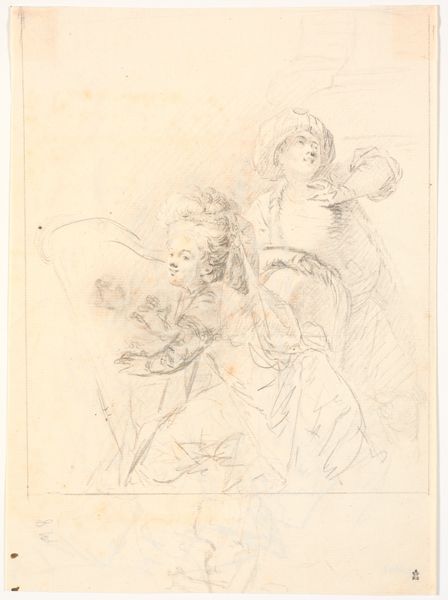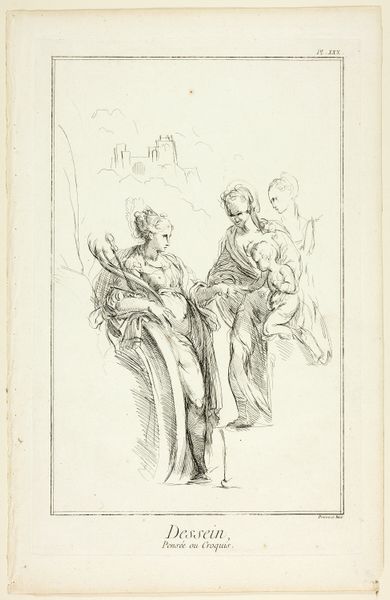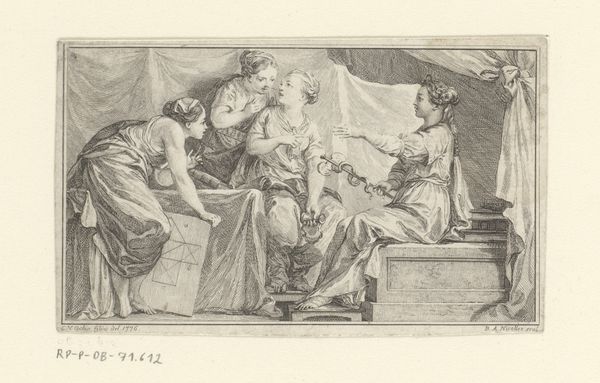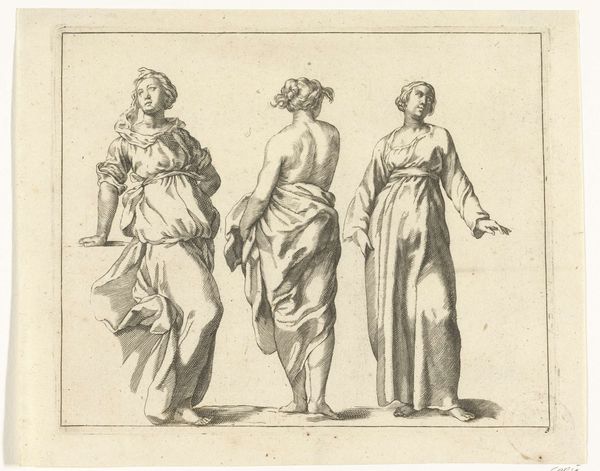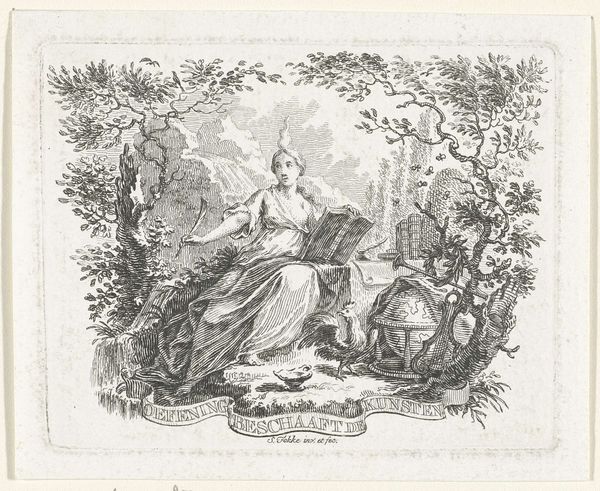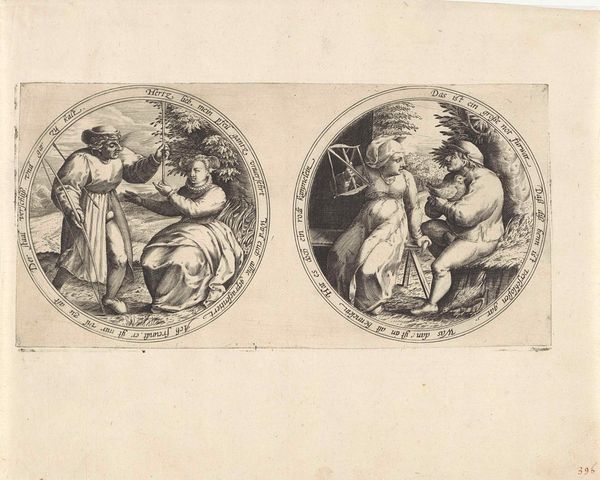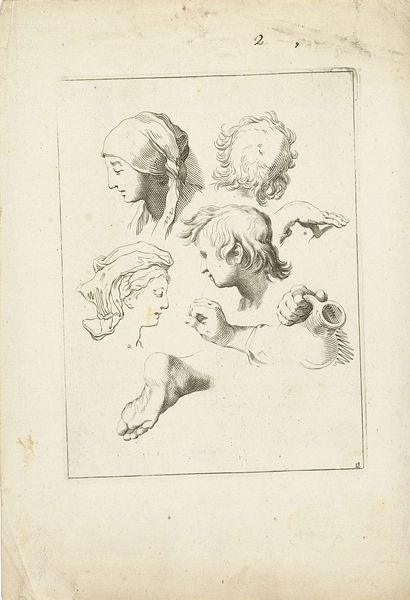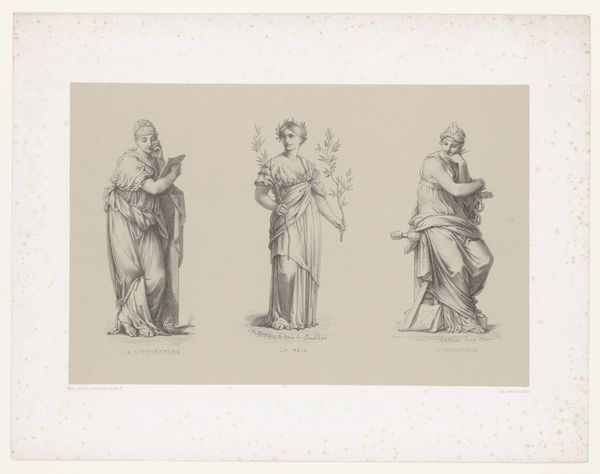
print, etching
#
baroque
# print
#
pen sketch
#
etching
#
figuration
#
history-painting
Dimensions: height 140 mm, width 215 mm
Copyright: Rijks Museum: Open Domain
Curator: Well, hello there. Let's chat about this intriguing piece, "Drie zittende vrouwen," or "Three Seated Women," as it’s more commonly known, crafted between 1668 and 1671 by Jan de Bisschop. It's an etching, a print. Currently residing at the Rijksmuseum, Amsterdam. What leaps out at you first? Editor: Immediately, this tonality - this greyish etching gives me such a melancholic and reflective vibe. All three women seem lost in thought, shrouded in introspection and an almost languid sense of history. Is this how women in power or influence were understood in the Baroque Era? Curator: Ah, an excellent question. Remember, Baroque loves drama, grandiosity. De Bisschop's choice to depict them this way, seemingly serene, not idealized, but maybe burdened by contemplation...it does counter the typical heroic depictions. There is also a clear hierarchy with each seated character in order of age to a sense of experience. Editor: Right, right. It's fascinating how even within the restraints of the etching medium, the artist still seems capable of using it to present a certain amount of dynamism of movement as well as a sense of scale. So are the robes supposed to highlight the vulnerability and objectification of the female body, and is this supposed to be for all female viewers? Curator: I wouldn't want to place them within this binary system but it really begs this question: who were these etchings created for and by whom? These works had such incredible life. And how many artists looked at prints of etchings to derive "originality" from those forms for their art? Editor: So many ghosts swirling, then. This conversation definitely made the piece click in a way I wasn't expecting. Curator: Absolutely! Perhaps even revealed a bit more than either of us anticipated. It’s why I enjoy this dance of thought between what is seen and what might have been.
Comments
No comments
Be the first to comment and join the conversation on the ultimate creative platform.

